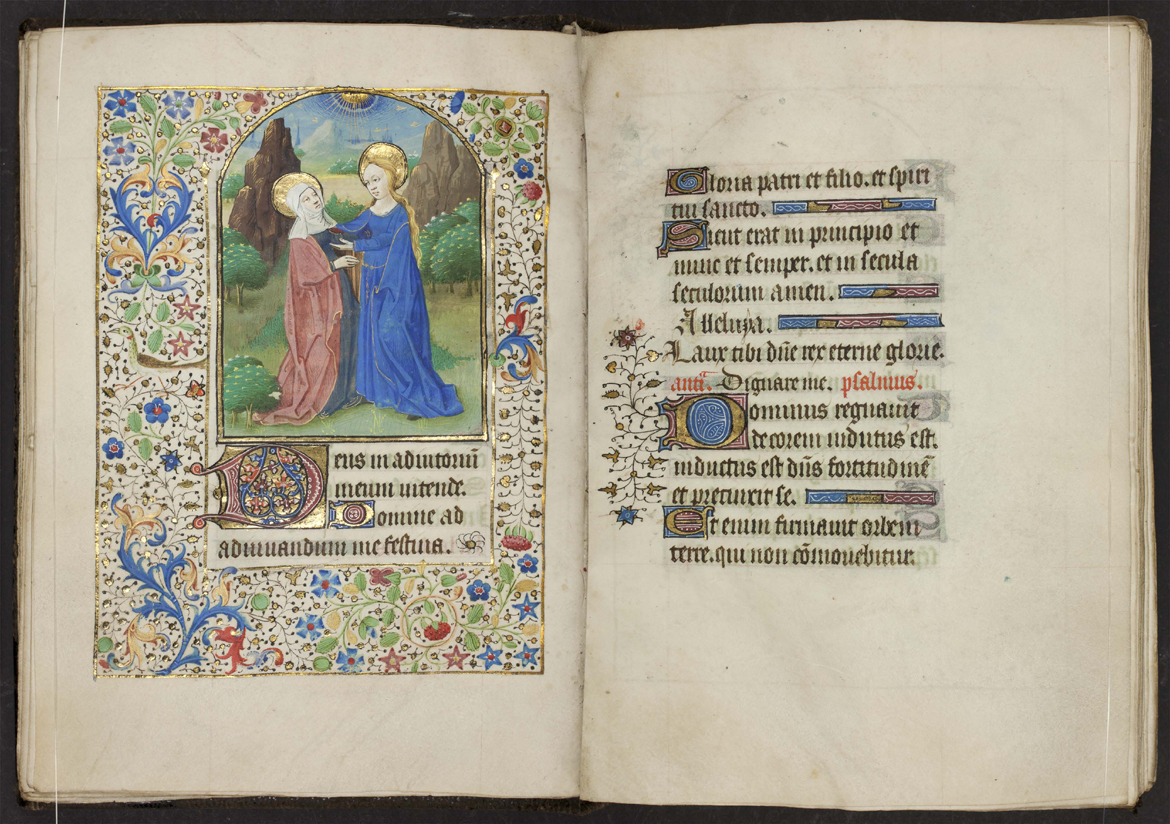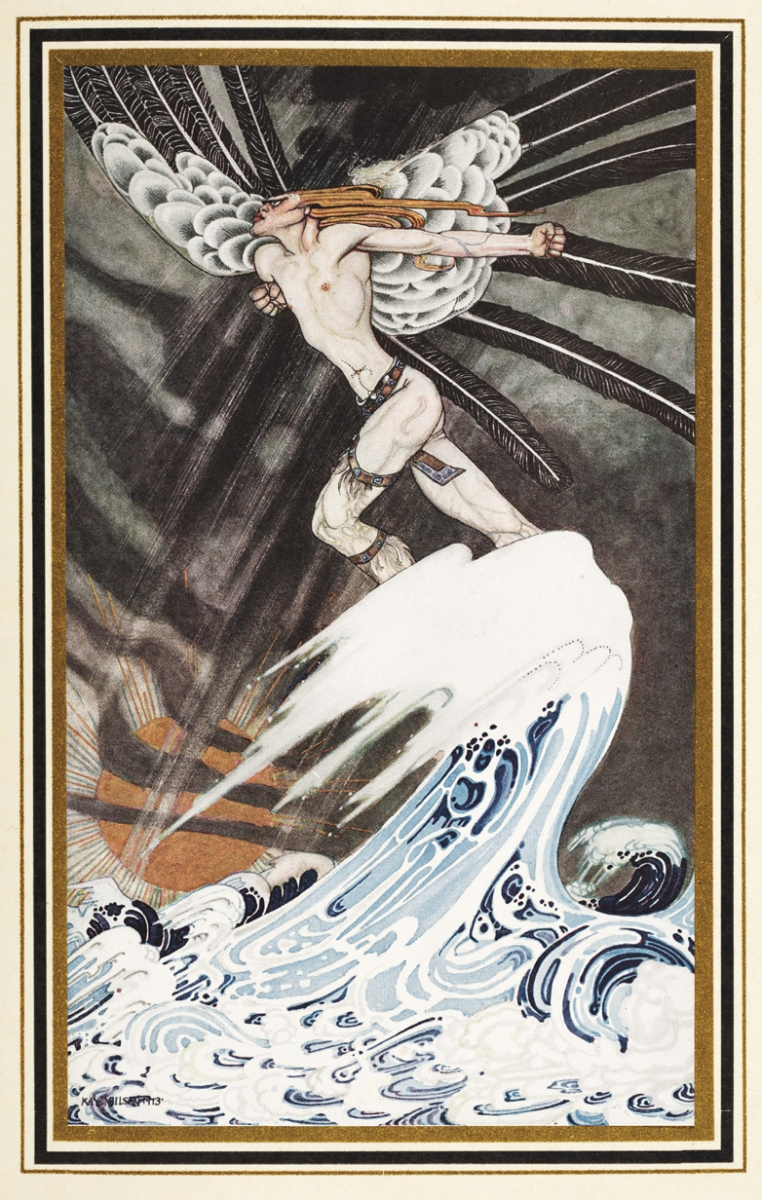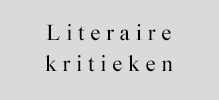Reportages
Op 7 oktober 2017 was het vijf jaar geleden dat Ivo Michiels overleed. Lars Bernaerts en Sigrid Bouset vroegen aan acht auteurs en aan zijn echtgenote om hun geliefde auteur sprekend in leven te houden.
Op zondag 8 oktober om 11 u. werd dit huldenummer van DW B ...
Alleen online: A Storehouse of Wonders. Treasures in the Alexander Turnbull Library, New Zealand. Part one.
Hidden away at the far end of the world is a storehouse of wonders waiting to be discovered by the world in general. In 1936 the following was noted enthusiastically in the New Zealand Railways Magazine:
How many citizens exult in the possession of this world-famed storehouse of wonders! One day, the Turnbull Library will be the objective of special pilgrimages of full ships from older lands. It is one of the great book collections of modern times, studded with treasures, priceless, rare, and, in many cases, unique in the world. The value of its contents can hardly be expressed in money. Its overseas visitors are astounded and regard with stupefaction, the serene indifference of the Wellingtonian to this heritage. (1)
Enthusiasm or not, these treasures certainly exist: treasures because of rarity, relevance to a certain topic, beauty, provenance, or purely because of age. This article takes a look at some of these artefacts and the people who collected them; in particular treasures from the Old World, treasures one would not expect to find in one of the world???s newest countries.
Old World treasures were important to early colonial collectors especially at a time when New Zealand???s own written history was so short and any heritage they had was strongly connected to Europe and the Mother Country. One way of maintaining that connection was to bring their heritage with them, and the written word was relatively easy to transport. Bibles were an obvious choice for many early immigrants, especially those from the lower classes, but for wealthier immigrants the importation of whole libraries was an option. At first this meant transportation by sailing ship but during the second half of the nineteenth century these ships were replaced by steamers. As New Zealand became more settled, collectors began to think about adding to their libraries or creating new libraries, and books from the Old World were high on the list. Letters would go back and forth to dealers on the other side of the world and orders would be sent out, usually in tin-lined cases, for inspection. This was a slow process taking anything from 75-120 days in the sailing ship to around six weeks in the steamer, and there was always the danger of damage during transit, cases getting mislaid and, during the First World War, of the ship and its contents being sunk at sea.(2) Some libraries were subsequently broken up after the death of their creator and this then allowed others with smaller pockets to pick up bargains on the local market.
Collecting in the New World was sometimes driven by activity in the Old World. One such example was the German Government???s worldwide census of fifteenth-century books set up at the beginning of the twentieth century. Johannes Andersen, the first Librarian of the Alexander Turnbull Library was given the task of creating the New Zealand list. To set this in motion, he sent a circular to local papers around the country asking for holdings to be reported. The result was a sudden upsurge of interest in these books which no doubt saved many that might otherwise have been lost. One such collector was Percy Watts Rule (1889-1953) from the small South Island town of Timaru, who in 1920 had described himself as being an amateur bibliophile with a small collection of around 1500 volumes.(3) Watts Rule had not been interested in fifteenth-century books before, but Andersen???s circular published in the Timaru Herald in October 1922 galvanised him into action.(4) On 18 October 1922 he wrote to Andersen:
Your letter on ???Fifteenth Century Books??? which appeared in the ???Timaru Herald??? a short while ago was extremely interesting to me, as although I have no volumes printed before the year 1500, I have had 7 different books through my hands, & I might be able to retrieve some of them. (5)
Watts Rule immediately set about seeking the current whereabouts of these books and in December 1922, he informed Andersen that after considerable correspondence and negotiations, he now possessed four ???magnificent examples of incunabula???.(6) One of these, now held in the Alexander Turnbull Library, was a copy of Johannes Gritsch, Quadragesimale (1477) with the book label of its former owner, that master of the late nineteenth-century Arts and Crafts movement, William Morris.(7)
A collector whose library was clearly focused on the Old World was Albert Clemas (c1880-1956). Clemas was an accountant for a machine importing firm in another small New Zealand town, the North Island town of Masterton. He was born in Teignmouth, Devonshire, England, but emigrated to New Zealand in 1901 bringing some of his books with him. Once settled, Clemas began to add to his library mostly via correspondence with overseas dealers, but he noted in a letter to Johannes Andersen that he got the most pleasure from unearthing a ???dusty old volume??? in a local secondhand shop.(8) In 1922 he described his library as numbering a little over 700 volumes.(9) This was certainly a place of wonder for the local populace at the time. An article in a newspaper in 1928 described it as a ???room of wonders??? ??? and enthused:
Those who have access to his unpretentious home know its secret. They pass through a curtain and a low door into the cave of Ali Baba. Within, by dim light, are the crowded relics of vanished civilizations, treasures of India, China and the Maori, besides one of the largest and finest collections of ancient Bibles in the world, their rare brothers owned by kings for a king???s ransom. Some still dangle chains that tied them in monastries [sic] of Tibet for study by hooded monks, just as their present possessor pores over them now with the absorption of a devotee. (10)
Clemas??? bible collection and five early Renaissance illuminated manuscripts were purchased in 1932 by the British and Foreign Bible Society (now the Bible Society in New Zealand) and were subsequently deposited in the Alexander Turnbull Library in 1978.(11) One of these treasures is a manuscript Book of Hours copied in eastern France in the middle of the fifteenth century.(12) Fig. 1 shows one of the twelve large miniatures. These large miniatures were produced probably in the same workshop, but by two different, presumably contemporary, illuminators.(13)
Fig. 1. Visitation. Illuminated manuscript from the Clemas library. Book of Hours, ff.41v-42, (184 x 133mm), mid-15th century, ATL ref: MSR-02.
Another manuscript treasure is a Carmelite Book of Hours, donated in 1958 by Wellington businessman Sir John Ilott (1884-1973), along with four other illuminated manuscripts.(14) The donation was described at the time as ???one of the most sumptuous gifts that the Turnbull Library has ever received???.(15)Carmelite Books of Hours are extremely rare, whether printed or in manuscript. This example, small in size, was made in north-eastern France between c.1498 and 1511 very probably in the Carmelite Convent at Baccaret by Friar Iohannes de Malzeville for the personal use of the Prior. On the right-hand page of Fig. 2 is a kneeling Carmelite friar with his name in a red scroll in the lower border: ???F.[. .].P.d???ARGENT???. This was Frere Pandargent, who was Prior of Baccarat in 1505. On the opposite page, the last line of text, is one of two contemporary inscriptions inserted into the text apparently by the scribe, although in slightly different ink which states that Johannes de Malzevilla wrote this in 1511. The other inscription on f.58v (not shown) again states that Johannes de Malzevilla was the scribe but also adds that he was a member of the Carmelite Convent at Baccaret.(16)
Sir John Ilott, born and educated in New Zealand, was something of a local philanthropist having previously donated a collection of etchings and prints by old and modern masters to New Zealand???s National Art Gallery. His other main interest as a collector was the book and the history of the book, and in the early 1950s when the New Zealand Ex Libris Society was compiling its Register of Book Collectors, Ilott reported that his library contained approximately 7000 titles and that his notable acquisitions were incunabula and early illuminated manuscripts.(17) Soon after this report, he sold ten incunables and fifteen sixteenth- and seventeenth-century titles to the Turnbull Library in 1952.(18) One of the incunables, Turrecremata, Quaestiones (1484) bears the rubricator???s signature on its last printed page, a factor of great delight to the book historian.(19) Ilott purchased the five illuminated manuscripts as well as three incunables and a number of sixteenth-century titles at the Michael Tomkinson sales at Sotheby???s, London in 1922.(20) Sadly much of Ilott???s library was eventually dispersed at public sale in 1951.(21) 
Fig. 2. Carmelite Book of Hours, f.16v-17, (157 x 110 mm), late 15th-early 16th century. Ilott donation. The decoration on f.17 marks the beginning of the fifteen psalms of degree. ATL ref: MSR-11.
One of the largest collections to enter the Turnbull Library was the bequest of Sir Joseph Kinsey in 1936. Born in Plumstead, Kent, England in 1852, and educated at the Royal Naval School Greenwich, Kinsey arrived in New Zealand with his wife in 1880 and settled in Christchurch where he died in 1936.(22) The Turnbull Librarian, Johannes Andersen, wrote about Kinsey???s library after Kinsey???s death in a letter to Percy Watts Rule: ???Yes I feel the going of Sir Joseph Kinsey; many???s the pleasant hour I have spent in the treasure house at Warrimoo; a true Aladdin???s cave; and not everyone knew the magic Open Sesame???(23)The precise size of Kinsey???s library is unknown, although it can be estimated at a little over 14,000 titles. Certainly its acceptance required much rearrangement of the Turnbull Library???s book accommodation, and this rearrangement was still continuing a year later.(24)
Kinsey???s interests were wide. He had a major interest in the Antarctic. He acted as attorney for both the Scott and Shackleton expeditions and received the Scott medal of the Royal Geographical Society in 1914 and a knighthood in 1917 in recognition of his work. He also collected shipping and alpine literature, books on art (especially Chinese and Japanese), travel, exploration, and modern English literature.(25) One example of his interest in English literature is a series of early twentieth century collectors??? editions of children???s literature, issued as gift books by the English publishers Dent, Hodder and Stoughton, Heinemann, and Constable. Many of these books, signed by their illustrator, are bound in gold-tooled vellum and all are elaborately illustrated with coloured plates by the best illustrators of the time such as Arthur Rackham, Edmund Dulac, Hugh Thomson, and Heath Robinson. One of the most beautiful is East of the sun and west of the moon illustrated by the Danish illustrator Kay Nielsen (see Fig.3).(26) 
Fig. 3. ???The North Wind goes over the sea???, East of the sun and west of the moon (1914), p.22, (282 x 218 mm) Kinsey bequest. ATL ref: qRPr HODD NIEL 1914 (casual photo)
Text continues in part two and three.
Notes
1. O. N. Gillespie, ???Romantic Wellington: Paradise for Poets and Painters,??? New Zealand Railways Magazine vol. 11, issue 5 (August 1936): 19-23, esp. p.21. I am grateful to Nikki Hessell for locating this quotation. Full text online at http://www.nzetc.org/tm/scholarly/tei-Gov11_05Rail-t1-body-d6.html Accessed 28 April 2011.
2. See for example letter 29 November 1892 Turnbull to Quaritch, Alexander Turnbull ???Letter book volume 1???, Alexander Turnbull Library [henceforth ATL] qMS-2053; letter 19 July 1912 Bernard Quaritch to Turnbull, ???Invoices, receipts etc and correspondence with book dealers,??? ATL MS-Papers-0057-112/1912, II; and letter 18 July 1917 Maggs Bros to Turnbull, ATL, MS-Papers-0057-113. For the mention of tin-lined cases, see letter 24 October 1913 Gorfin to Turnbull, ATL MS-Papers-0057-112/1912,V.
3. Letter 17 July 1920 Watts Rule to J.C. Andersen, ???Correspondence (Ro-Ry)???, ATL MS-Papers-0181-072.
4. Johannes C. Andersen, ???Fifteenth century books???, Timaru Herald, 3 October 1922, p. 8. This was a follow-up circular to the first one sent out in May 1922 (see Archives New Zealand, File: AAOJ 6036/1b).
5. Letter 18 October 1922 Watts Rule to J.C. Andersen, ATL MS-Papers-0181-072. The previous owner of all seven titles, now held in the Alexander Turnbull Library, was Benjamin Hibbard (1834-1912) also of Timaru.
6. Letter 3 December 1922 Watts Rule to J.C. Andersen, ATL MS-Papers-0181-072.
7. Johannes Gritsch, Quadragesimale ([Strassburg: Printer of the Henricus Ariminensis (Georg Reyser?), not after 1477]), ATL fRInc GRITSCH Quad 1477. For more on the Turnbull Library incunabula collection, see Ruth Lightbourne, ??? ???Where did they come from???? Incunabula in the Special Printed Collections of the Alexander Turnbull Library??? Turnbull Library Record vol. 41 (2008): 10-35.
8. Letter from Clemas to Johannes Andersen [n.d. but in answer to earlier letter from Andersen dated July 1922]. ???Correspondence (Cle)???, ATL MS-Papers-0181-024. Also letter 30 September 1932 Clemas to Calder, ???Correspondence between Mr A. Clemas and the BFBS relating to purchase of Clemas Collection???, ATL 80-179-21/10.
9. Letter Clemas to Johannes Andersen [n.d. but in answer to earlier letter from Andersen dated July 1922]. ATL MS-Papers-0181-024.
10. ???Ali Baba???s Cave??? NZ Truth, Issue 1192, 4 October 1928, pg. 6.
11. Other books from Clemas??? collection were sold at a J.H. Bethune & Co auction in Wellington on 22 March 1935. INSERT BETHUNE REF.
12. MSR-02. This has been digitized and is available to view through the manuscript catalogue TAPUHI http://tapuhi.natlib.govt.nz/ See also Margaret M. Manion, Vera F. Vines and Christopher de Hamel, Medieval and Renaissance manuscripts in New Zealand collections (Melbourne, London, New York: Thames and Hudson, 1989), no.136.
13. See Manion, Medieval, no. 136.
14. MSR-11. This has been digitized and is available to view through the manuscript catalogue TAPUHI http://tapuhi.natlib.govt.nz/ . Manion, Medieval, no. 152. The four other manuscripts are a Book of Hours (MSR-07), Bible (MSR-09), Missal (MSR-18), and Boethius, Consolatio (MSR-19). See also Christine McCarthy, ???Making significance: Historiated initials and the donation of the Sir John Moody Albert Ilott illuminated manuscripts to the Alexander Turnbull Library??? in Migrations: medieval manuscripts in New Zealand, ed. Stephanie Hollis and Alexandra Barratt (Newcastle: Cambridge Scholars Publishing, 2007), pp. 123-143; also Glynnis M. Cropp, ???The Consolatio Philosophiae of Boethius in New Zealand??? in Migrations ed. Hollis and Barratt, pp. 184-201.
15. ??? ???Sumptuous gift??? to local library???, Evening Post (Wellington), 10 October, 1958, p. 14.
16. Christopher de Hamel, ???A Carmelite Book of Hours??? Turnbull Library Record, v.4. (May 1971): 21-30.
17. See ???Members completed forms for the proposed Register of Book Collections ??? Surnames E-N???, New Zealand Ex Libris Society, ATL, 88-084-1/09C. The register was published in 1958: New Zealand Ex Libris and Booklovers??? Society, A Roll of book collectors in New Zealand (Wellington: New Zealand Ex Libris and Booklovers Society, 1958).
18. Alexander Turnbull Library ???Purchase Book???, 20 Dec. 1951???4 Aug 1966, ATL qMS-0041, p. 7, entry dated 17 March 1952.
19. Johannes de Turrecremata, Quaestiones Evangeliorum de tempore et de sanctis (Deventer: Richardus Pafraet, 20 Nov. 1484), ATL qRInc TURRE Quae 1484. A digitised image of this page can be viewed through the National Library catalogue of published items http://nlnzcat.natlib.govt.nz/cgi-bin/Pwebrecon.cgi?DB=local&PAGE=FIRST
20. The J.H. Bethune auction was held on 12 and 13 December 1951. See ???Records of auctions 1944-1955, J.H. Bethune and Company Ltd: Records (84-113), ATL 84-113-01.
21. New Zealand Ex Libris and Booklovers??? Society, Roll of book collectors, 24.
22. Obituary, ???Sir Joseph Kinsey???, The Dominion (Wellington, N.Z.), 6 May 1936, p.13.
23. Letter 13 May 1936 J.C. Andersen to Percy Watts Rule, ???Papers relating to Johannes Carl Andersen???, ATL, MS-Papers-0002-09.
24. The Turnbull Library annual report for 1937 notes the acquisition of 16,000 volumes, 15,500 by gift. At least 700 of the 15,000 were acquired from other donors. See ???Turnbull Library Donation Book???, vol 1 (Sept 1914-Feb 1943), p. 99-115; and Appendices to the Journals of the House of Representatives of New Zealand [henceforth AJHR] 1937, H.32, pp. 20-21.
25. Obituary ???Sir Joseph Kinsey??? The Dominion p. 13.
26. Peter Christen Asbj??rnsen , East of the sun and west of the moon: old tales from the North , illustrated by Kay Nielsen (London : Hodder & Stoughton, [1914]). Copy 17 signed by illustrator, ATL qRPr HODD NIEL 1914.


%20the%20invisible%20XXVIII%2c%20100x80%20cm%2c%202014.jpg)



